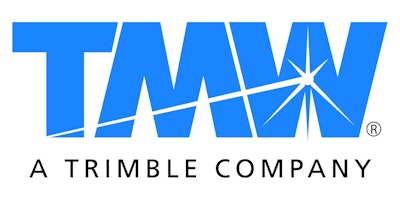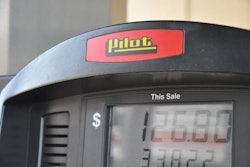
For its most recent survey, TMW Systems, the largest provider of enterprise fleet management software in the industry, collected responses from 131 companies in three primary markets: truckload irregular route, truckload dedicated, and brokerage/non-asset.
Carriers who participated operate a combined total of more than 87,000 tractors and over 173,000 trailers. Some of the highlights from the survey are summarized below:
Financial
More than 60 percent of respondents had an operating ratio (OR) of 96 or less, with more than half at 94 or lower, and 16.7 percent under 90. By comparison, in 2013 only 48 percent of fleets were making at least a 4 percent margin, and 3.2 percent had a sub-90 OR.
Utilization was a key factor in OR performance. Among 2014 respondents, those reporting an OR of 96 percent or lower averaged 2,387 revenue miles per seated tractor per week. Fleets reporting ORs higher than 96 percent averaged just 1,864 miles.
Compared to 2013 results, net rate per mile and utilization in 2014 went up by 7 percent ($.10 per mile) and by 2 percent (54 miles per seated truck, per week) respectively. Of special note was that dedicated fleets that made use of planning optimization software averaged 142 more revenue miles per seated truck, per week over the preceding 12 months — a 6.3 percent upswing.
Drivers
Forty one percent of participants reported driver turnover of 75 percent or higher. Pay had the strongest correlation with turnover: all of the respondents in the irregular-route truckload sector with annual driver earnings below $50,000 had more than 50 percent turnover.
Only fleets reporting average driver pay above $55,000 had turnover rates of 25 percent or less.
The ratio of drivers to fleet managers also has a correlation.
- Sixty eight percent of fleets with less than 30 tractors (or drivers) per fleet manager reported less than 75 percent turnover
- Eighty three percent of fleets with less than 21 tractors per manager reported sub-75 percent turnover, of which many achieved 50 percent or lower.
Equipment
Truckload irregular-route fleets made significant progress modernizing their equipment, with just 20 percent of respondents reporting average tractor age of more than 48 months compared to 51 percent last year.
As for managing fuel costs, 80 percent of respondents achieved 6 to 7 miles per gallon over the preceding 12 months. Nearly 90 percent are using some form of engine idle reduction technology, of which 83 percent are averaging under 30 percent engine idle.
Diversification continues to be a strong trend. More than 37 percent of respondents operate in multiple segments now and 34 percent are planning to expand into at least one additional service offering within the next three years. More than 80 percent cited improved margins as a priority for their diversification strategy, followed by response to client demand, increased market share, and handling competitive pressures.
To download a full version of the 2014 study, click here














